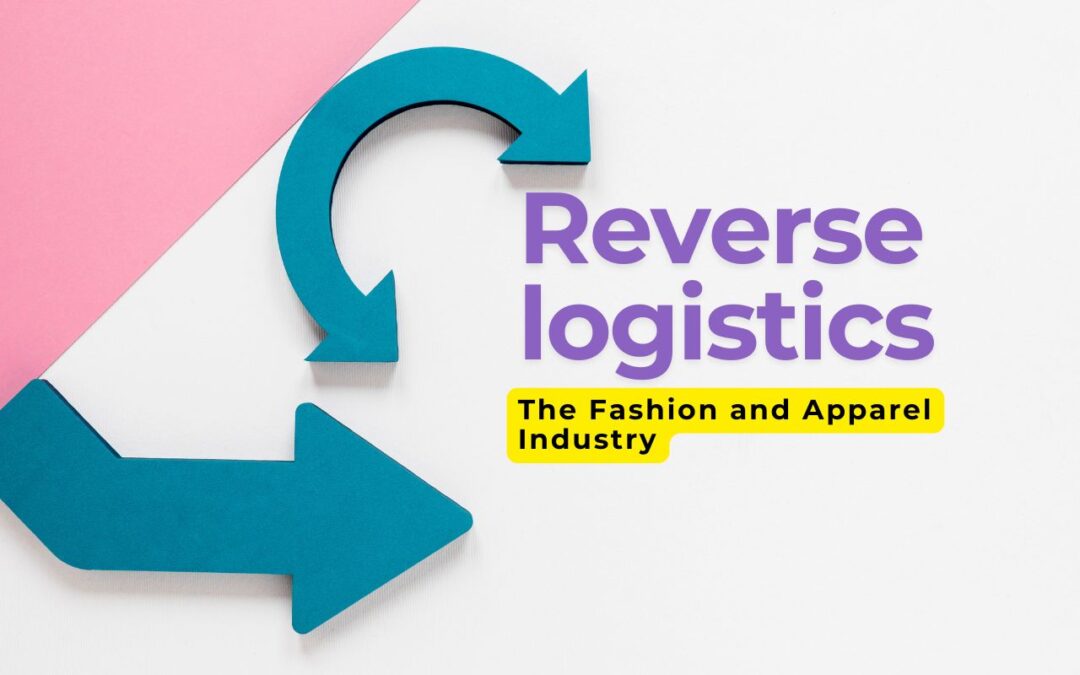Reverse logistics, once considered a peripheral aspect of supply chain management, has now become a vital strategy—especially in the dynamic and fast-paced fashion and apparel industry. As the industry battles with growing e-commerce returns, increasing customer expectations, sustainability concerns, and pressure to reduce environmental impact, developing effective reverse logistics strategies is no longer optional but imperative. In this in-depth blog, we explore how reverse logistics functions in the fashion industry, why it matters, the challenges it presents, and strategic approaches to manage it effectively.
What is Reverse Logistics?
Reverse logistics refers to the process of moving goods from their final destination back to the seller or manufacturer for return, repair, remanufacture, recycling, or disposal. In the fashion and apparel industry, this typically involves product returns, unsold inventory, recycling of used garments, and waste management.
The Importance of Reverse Logistics in Fashion
- High Return Rates
- E-commerce has transformed the shopping experience. Consumers now expect free returns and instant refunds, leading to return rates of 20%-40% in the fashion sector.
- Customer Expectations
- With customer-centricity being key, a smooth return process boosts customer satisfaction and loyalty.
- Sustainability Pressure
- The industry is one of the largest polluters globally. Reverse logistics allows for recycling and reusing, reducing landfill waste and carbon footprints.
- Inventory Management
- Efficient reverse logistics enables better inventory recovery and resale, improving bottom lines.
Key Components of Reverse Logistics in Fashion
- Returns Management
- Includes handling customer-initiated returns due to size issues, dissatisfaction, or defective items.
- Refurbishment and Resale
- Items in good condition are cleaned, repaired, and resold through outlets or second-hand platforms.
- Recycling and Upcycling
- Damaged or unusable items are repurposed or converted into raw materials.
- Donation and Disposal
- Some unsold goods are donated or ethically disposed of to minimize environmental harm.
- Reverse Transportation
- Efficient and cost-effective transportation solutions are needed for product returns.
Challenges in Implementing Reverse Logistics in Fashion
- Lack of Infrastructure
- Most fashion retailers are equipped for forward logistics but lack facilities for reverse flow.
- High Costs
- Reverse logistics can be expensive due to handling, transportation, and restocking.
- Inventory Complexity
- Managing SKU-level returns adds complexity, especially when dealing with seasonality.
- Quality Control
- Assessing the condition of returned goods requires human intervention and time.
- Fraudulent Returns
- Some consumers abuse lenient return policies, leading to financial losses.
- Environmental Concerns
- Improper disposal of returned or unsold apparel contributes to environmental degradation.
Strategic Approaches to Reverse Logistics in Fashion
1. Streamlined Return Policies and Processes
- Offer user-friendly return options and prepaid return labels.
- Use return portals that automate authorization, tracking, and status updates.
2. Centralized Return Centers
- Establish dedicated facilities for inspecting, sorting, refurbishing, and rerouting returns.
3. Technology Integration
- Use AI and machine learning to forecast returns, manage inventories, and automate sorting.
- Employ RFID and barcode scanning for better traceability.
4. Circular Fashion Models
- Promote take-back programs and garment recycling initiatives.
- Partner with recycling companies to close the loop.
- Encourage resale and rental models to extend product life cycles.
5. Data-Driven Decision Making
- Analyze return reasons and trends to improve product quality and reduce future returns.
- Use predictive analytics to optimize inventory and return logistics.
6. Collaboration with Third-Party Logistics (3PLs)
- Work with specialized logistics providers for scalable and cost-effective reverse operations.
7. Omni-Channel Return Options
- Enable customers to return online purchases in physical stores and vice versa.
- Leverage stores as mini-return hubs to reduce transportation costs.
8. Sustainability-First Approach
- Use biodegradable packaging for returned items.
- Train staff to separate recyclable and non-recyclable returns.
- Publish transparent sustainability reports on returned goods management.
Case Studies of Successful Reverse Logistics in Fashion
Zara (Inditext Group)
- Uses centralized distribution and return centers.
- Invests heavily in recycling and eco-efficient store operations.
H&M
- Offers in-store garment collection for recycling.
- Collaborates with re:newcell for sustainable fiber regeneration.
Patagonia
- “Worn Wear” program enables the resale of refurbished items.
- Offers repair services to prolong garment use.
ASOS
- Provides a streamlined digital return process.
- Partners with multiple courier services for local pickup and drop-off.
How Small Fashion Brands Can Implement Reverse Logistics
- Start Small
- Begin with basic return policies and manual processing.
- Leverage Local Partnerships
- Collaborate with local laundries, repair shops, or donation centers.
- Digital Tools
- Use cloud-based inventory and return management tools like Returnly or Loop Returns.
- Customer Education
- Encourage mindful purchases and educate about the environmental cost of returns.
- Subscription or Rental Models
- Explore alternative models that inherently reduce returns and promote reuse.
The Role of Reverse Logistics in Sustainable Fashion
As sustainability becomes a defining factor in consumer choice, reverse logistics is central to creating a circular economy. Brands that embrace these systems can:
- Reduce their carbon footprint
- Minimize landfill waste
- Build brand loyalty through environmental responsibility
- Lower overall costs through recovered inventory
Future Trends in Reverse Logistics for Fashion
- Blockchain for Transparency
- Track product lifecycle and improve accountability in reverse flows.
- AI-Driven Personalization
- Reduce returns by offering better size predictions and style suggestions.
- Green Logistics
- Use electric vehicles and carbon-neutral shipping for returned products.
- Shared Reverse Networks
- Multiple brands may collaborate on return infrastructures to share costs and reduce impact.
Conclusion
Reverse logistics is no longer a reactive process but a strategic function in the fashion and apparel industry. It supports operational efficiency, sustainability goals, and customer satisfaction. Brands that proactively adopt and evolve their reverse logistics strategies will not only thrive in a competitive marketplace but also contribute positively to the planet. As the industry continues to evolve, reverse logistics will be a linchpin for success and sustainability.
Whether you’re a global brand or a budding label, the time to invest in robust reverse logistics is now.













